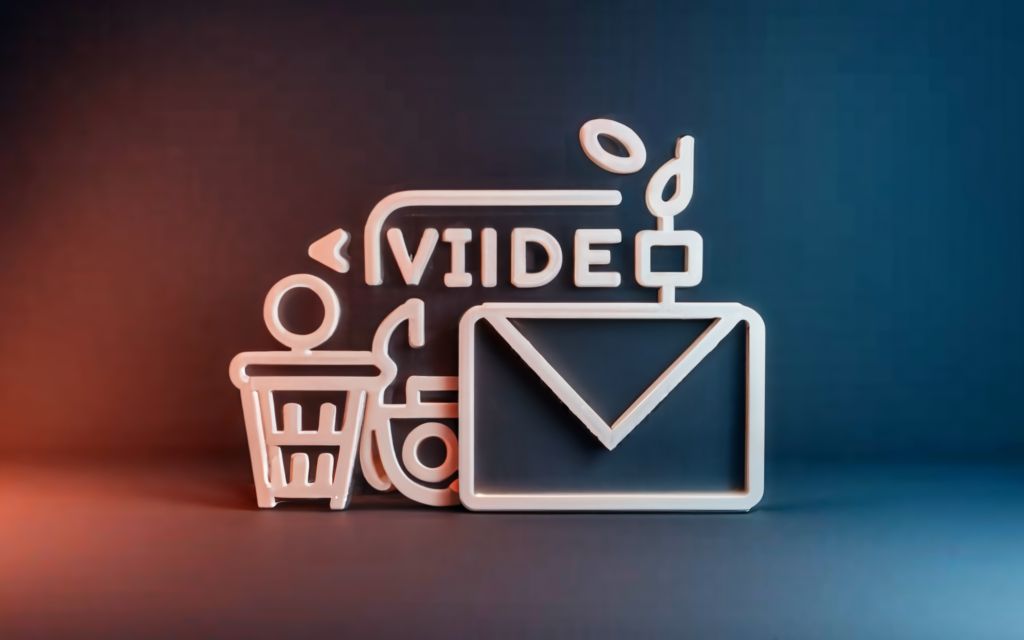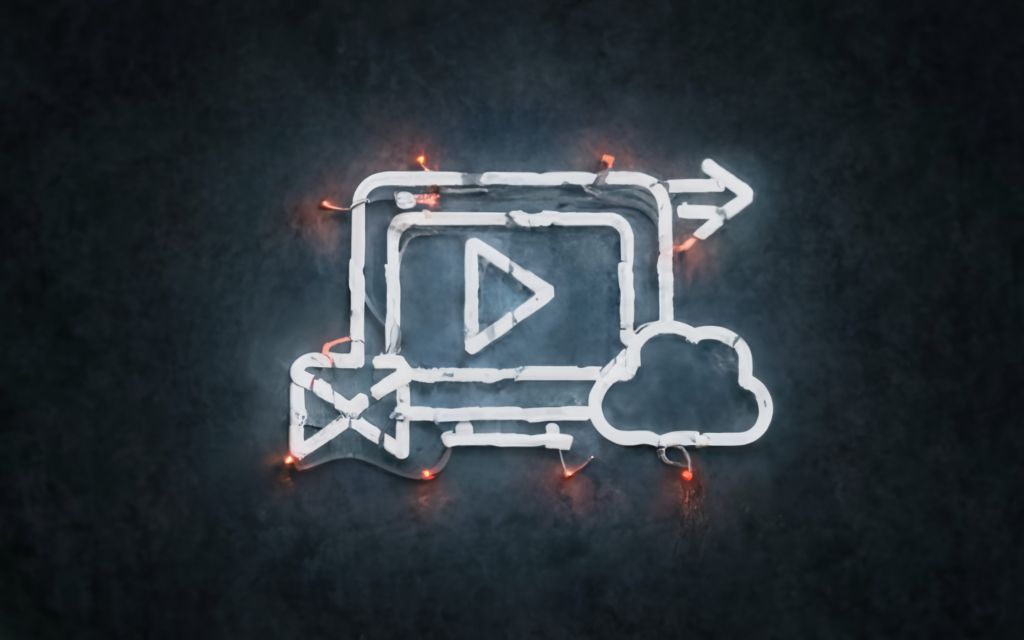Video killed the radio star, but can it breathe new life into your email marketing? Many marketers are hungry to tap into video’s unrivaled engagement and click appeal. But clunky email clients might leave your celebratory viewing party dead on arrival. In this comprehensive guide, we’ll serve up everything you need to know to deliver mouthwatering video experiences tailored for any inbox appetite. Read on to make your emails the main video content course subscribers crave.
Why Add Videos to Email Campaigns?
Video is taking over content marketing across the board. According to Wyzowl’s 2022 video marketing statistics, 96% of consumers say they’ve watched an explainer video to learn more about a product or service. What’s more, video is poised to account for 82% of all internet traffic by 2022.
Email marketers want in on the action. WhileEmbedding videos directly in emails has some technical hurdles, the benefits make it worth exploring options. Here are four key reasons why video can be a game changer for email campaigns when done right:
Boost Engagement and Open Rates
Let’s start with a shocking stat: Including the word “video” in an email subject line boosts open rates by 19% on average. Who wouldn’t be intrigued to see what that video has in store for them?
Actual video content takes that engagement up a notch. A report by Invodo found that 52% of consumers are more likely to engage with a product video in email than anywhere else.
For example, when Highspot added video emails to their campaigns, they saw 25% higher open rates and 98% increases in click rates.
Beyond the hard metrics, video email ups the perceived production value of a campaign. The motion and dynamism stands out in the often text-heavy inbox.
Audiences come to expect video from top brands as well. A polished video experience signals that extra time and care was taken to produce something special.
Increase Clickthrough and Conversion Rates
According to Social Media Today, video emails enjoy clickthrough rates of between 5-15%, compared to just 2-3% for plain text emails.
After getting viewers to click, video also drives conversions. In one study by Vidyard, [71% of consumers made a purchase after watching a branded video in email](https://www.vidyard.com/blog/ advertise-video-in-email/).
Some effective ways brands have leveraged video’s conversion power include:
- Product demos
- “How-to” tutorials
- Customer testimonials
- Behind-the-scenes company culture videos
- Personalized video greetings
The multimedia experience creates a stronger connection with customers. Shopping becomes a more informed, confident decision after seeing a product in action or hearing peer experiences.
More Memorable and Impactful Messaging
Reading text engages different parts of the brain than watching a video. Visuals paired with audio are naturally more stimulating and leave a stronger impression.
In fact, Forrester research shows that viewers retain 95% of a message when they watch it in a video compared to 10% when reading it in text.
Some ways brands maximize video’s memory-cementing powers include:
- Reinforcing key brand messages
- Highlighting product USPs
- Recapping loyalty program benefits
- Sharing company values statements
- Introducing team members
With video in your corner, critical information has a better chance of sticking in customers’ minds.
Enhance Brand Storytelling
At its core, good marketing comes down to storytelling. The most compelling brands use narratives to connect with audiences on a deeper level.
Video provides fertile ground for spinning engaging stories, showcasing emotions, and humanizing your company. Rather than just telling people who you are, you can show them what sets your brand apart.
Examples of videos that excel at brand storytelling:
- Documenting events like conferences and product launches
- Spotlighting office culture and employees
- Customer success stories and reviews
- Behind-the-scenes factory/kitchen tours
- Animated history of the company
- Founder childhood backstory
Weaving a captivating visual narrative gives customers insight into the values and passion fueling your business. Video-driven storytelling also builds affinity with a brand, boosting loyalty.
So in summary, don’t leave video out of your email marketing mix. The medium ticks all the boxes in terms of grabbing attention, driving clicks and conversions, conveying memorable information, and forging emotional connections through visual storytelling. With the right strategy for your subscriber base, video in email can become an indispensable part of your customer engagement arsenal.

Current State of Video Support in Email Clients
If embedding HTML5 video in emails were easy, everyone would be doing it already. The reality is that direct video support varies widely across email clients and platforms. There are some bright spots, but workaround solutions are still required to ensure the best subscriber experience.
Let’s break down what major inbox providers allow when it comes to playing videos natively within messages.
Partial Compatibility for HTML5 Video Tags
The HTML5
The tag itself is compatible with some clients:
- Apple Mail
- Outlook for Mac
- iOS Mail
- Thunderbird
Support is slowly expanding over time. For instance, Gmail enabled the AMP4Email spec which supports HTML5 video tags.
But of course – it’s not that simple. Both Gmail and Outlook for Windows handle videos differently through their web interfaces vs. native apps. And support on mobile Outlook remains spotty.
Which brings us to the next point…
The Majority Don’t Support Native Playback
While the above clients allow HTML5 video, they only represent a fraction of inboxes. The harsh reality is that the majority of email apps do not support embedded video playback within messages.
According to Litmus’ 2022 report, lack of native playback affects:
- Gmail
- Outlook.com
- Yahoo
- AOL
- Most mobile mail apps
That’s over 60% of inboxes that will show a broken video player or fallback image rather than an embedded video.
| Client | Direct Playback | Requires Fallback |
|---|---|---|
| Gmail | ❌ | ✅ |
| Outlook.com | ❌ | ✅ |
| Yahoo | ❌ | ✅ |
| AOL | ❌ | ✅ |
| iOS Mail | ✅ | ❌ |
| Outlook macOS | ✅ | ❌ |
As a baseline, marketers must assume embedded video won’t work and plan fallback content accordingly.
Gmail Doesn’t Allow Embedded YouTube Videos
Given its ~1.5 billion users, Gmail’s lack of video support especially stings. What’s worse – embedded YouTube videos are also a no-go in Gmail.
The client blocks Youtube’s required iframe embedding code, so videos end up missing altogether.
Gmail does display YouTube links as clickable thumbnails. But they aren’t playable within the message itself.
The takeaway? Don’t bother trying to embed YouTube or other hosted videos in Gmail-destined campaigns. Stick to static preview images that link out.
Outlook Requires Special Handling
From 2007 to 2016, Outlook utilized Microsoft Word as an email rendering engine. This introduced some…quirks in displaying HTML and CSS. Videos in Outlook during this period exhibit inconsistent behavior:
- Videos appear but won’t play automatically
- Controls don’t display in the player
- Background colors get changed
Dealing with Outlook’s idiosyncrasies requires littering code with proprietary mso tags. These allow applying special Outlook-specific styling fixes.
For example, adding a class like mso-hide:all hides embedded content. In its place, you could display a placeholder image or text:
<!--[if !mso]>
<video width="600" height="400" controls>
<source src="myvideo.mp4" type="video/mp4">
</video>
<![endif]-->
<!--[if mso]>
<img src="placeholder.jpg" width="600" height="400">
<![endif]-->Today’s Outlook clients on Windows and Mac have improved. But videos in Outlook remain troublesome without coding workarounds. Testing on multiple versions is a must to avoid surprises.
The support for embedded video in HTML emails is clearly a mixed bag. Very few clients allow plug-and-play video embedding. The majority require fallback content to optimize the experience across different inboxes.
Treat native video playback as a nice-to-have rather than an expectation. With robust testing and coding techniques, video can still make an impact despite the technical challenges involved.

Methods for Adding Video to Emails
Given the spotty embedded video support across email clients, marketers have gotten creative with solutions. There are three main techniques for bringing video into email campaigns:
- Directly embed video files
- Link thumbnails to hosted videos
- Build faux players with CSS
Let’s explore examples and best practices for each method.
Directly Embed Video Files with HTML5
The HTML5 <video> tag offers the most straightforward way to embed a video file within an email body. For full browser/client support, you need to upload and host the MP4 video file yourself.
Direct embedding gives you the most control over playback and design. But it also requires the most testing and fallback work.
MP4 Format Works Best
Of the formats supported by HTML5, MP4 is the most widely compatible for email videos. The H.264 video codec compresses files to smaller sizes without compromising quality.
Aim for videos less than 10 MB whenever possible. Shorter runtimes (30-90 seconds) also minimize file weight.
Set Poster Image and Controls
Two important <video> attributes are poster and controls:
<video poster="thumbnail.jpg" controls>
<!-- Video source -->
</video>The poster provides a preview frame before playback starts. controls displays the video transport bar for starting/pausing, volume, and more.
Handle Fallbacks for Unsupported Clients
As we’ve covered, many major clients like Gmail don’t support embedded videos.
You must code fallbacks to avoid blank or broken players in those clients. Basic options are:
- Static image or GIF inside
<video>tags - Same assets linked from wrapped
<a>tags - Faux player built with CSS
Set up these fallbacks using media queries and Outlook conditional comments.
Fallbacks ensure all subscribers can view the video content, even if not directly embedded.
Link Video Thumbnail to Hosted Video
Rather than embed videos directly, you can link a preview frame to a hosted playback page. This method works universally across email clients.
Use Static Image or Animated GIF
The linked element can be either:
- Static image like a video screenshot
- Animated GIF made from an excerpt
- Video thumbnail generated from editing tools
Aim for an eye-catching, recognizable image representative of the full video.
Add Play Button and CTA
Layering a “Play” button overlay provides a call-to-action to click and view the content. You can also add descriptive text like “Watch video” next to the preview.
Link the image and button to a hosted video or landing page. Ensure any CTAs make sense after viewers watch the full video.
Build Faux Players with CSS
One more inventive option is to fake a video player right inside email content. Known as “faux video,” this approach uses CSS to animate sequences of images or GIFs.
Animate Image Sprites or GIFs
Slice screenshots or clips into individual frames. Rapidly cycling through these with CSS creates an illusion of video playback.
You can trigger the animation on :hover or convert GIFs into short streaming MP4/WebM files.
Mimic Video Playback Experience
Matching the real video player aesthetic makes the experience more convincing. This includes:
- Play/pause toggle
- Progress bar
- Scrubber
- Volume
- Fullscreen
Modifying just a few CSS properties can replicate interactions like toggling playback.
With creativity, faux video builds an interactive, branding-friendly video facsimile using standard email code.

Best Practices for Video Email Design
With so many technical considerations, it’s easy to overlook design when adding videos to emails. But presentation and usability matter just as much, if not more, for the end-user experience.
Follow these best practices to ensure your video emails align with brand style and drive the desired actions:
Keep File Sizes Small
Big file sizes lead to big problems in email campaigns. Large videos hamper deliverability, hog mobile data plans, and frustrate recipients.
General guidelines for email-friendly video sizes:
- Under 10 MB for direct embeds
- Under 3 MB for animated GIFs
- Under 2 MB for static images
If you can’t re-encode existing video assets to reduce filesize, consider using shorter clips or excerpts.
Also compress any GIFs using online tools or Adobe services. Most animated GIFs can be resized to under 1 MB without drastically affecting quality.
As a rule of thumb, don’t force subscribers to load huge files before finding value in your video content.
Position for Maximum Impact
There are no set rules for video placement in emails. Testing different layouts is the best way to determine optimal positioning.
Some tips on positioning:
- Lead with the video – Grab attention upfront before the rest of your content.
- Embed mid-email – Break up blocks of text and reinforce key messaging.
- Use as footer – End on a dynamic, visual high note.
- Let images breathe – Give extra space around video thumbnails.
Avoid cramming videos after lots of dense copy. Let them shine in areas with minimal distractions.
Subject line position also matters – “See our new video” has more impact at the start versus the end.
Match Brand Style and Layout
Even if you can’t embed a playable video, make static and linked thumbnails blend smoothly into email layouts.
Some ways to match brand style:
- Use brand color schemes for wrapper elements and CTAs
- Replicate header, footer, and column structures
- Maintain consistent spacing, alignments, and font styles
- Add logo, tagline or other brand identifiers
Mimicking the rest of your email template design makes video content feel cohesive. Subscribers will better associate the visual experience with your brand.
Clear Call-to-Action
Call viewer attention to click and watch the full video with straightforward CTAs.
Some examples of effective CTAs:
- Watch Video
- See How it Works
- Play Demo
- View Testimonial
- Click to Play
Keep language concise – long descriptors compete with the visual medium. Position CTAs closely tied to the thumbnail or play button.
Avoid Autoplay
Autoplaying video is disruptive and risks driving subscribers away.
Exceptions are muted autoplay for short teaser clips, or on hosted landing pages.
Within emails, autoplay falls flat:
✅ Do:
- Static poster image
- Play on click
- Brief looped clip with CTA
❌ Don’t:
- Autoplay full-length videos
- Loud suddenly playing video
- Anything over 10 seconds looping
Let viewers opt into your video content through deliberate clicks rather than force-feeding it.
Subject Line Should Reference Video
Given limited preview text real estate, clearly telegraph the presence of video content right in the subject line.
✅ Good:
- “Check out our new [product] video!”
- “See the video from our latest photoshoot”
- “[Company name] demo video included!”
❌ Bad:
- “New product promo inside!”
- “Your monthly newsletter is here”
- “Exciting content awaits!”
Including “video” sets accurate expectations upfront. Tantalizing but vague subject lines just lead to disappointment upon seeing a still image.
Some other quick hits:
💡 Use landscape dimensions for proper video style framing.
💡 Add motion cues like animated GIF outlines.
💡 Link static images to timestamped video playback pages.
💡 Personalize placeholders for known customer preferences.
With forethought to presentation and creative flair, your video emails can capture attention while maintaining brand essence. Keep production value high regardless of the technical medium used to bring video into the inbox.

Top Video Email Examples and Campaigns
Now that we’ve covered best practices, let’s look at some stellar examples from real brands using video in emails.
These samples run the gamut from product demos to animated holiday greetings. Studying these campaigns illustrates how others have conquered video-in-email technical and design challenges.
Product Demos and Tutorials
Nothing speaks to a product’s value like seeing it in action. Product videos attract interest and inform purchase decisions.
Ruggable’s new product lineup
Ruggable shares short looping GIFs of new product videos linked to full demos on their site. Clean, consistent branding includes mono frame thumbnails and play buttons.
Loom showing how their tool works
This automated Loom email provides a personalized onboarding experience with a seamless product demo.
Amazon Echo Dot Demo
Amazon promotes their Echo Dot smart speaker with a lifestyle video showing the product in context. Clean, simple styling puts focus on the demo.
Appcues’ interactive product tutorial
This email from Appcues contains an embedded interactive product tour right inside the message!
Customer Testimonials
Happy customer videos lend credibility and boost trust in your product claims.
Hubspot promoter video stories
Hubspot highlights delighted customer stories, letting them speak for the product’s value. Standard play buttons overlay poster images from each video interview.
Trustpilot reviews in action
Rather than quotes, Trustpilot brings reviews to life by re-enacting them in short video clips. This shows their rating service benefitting real customers.
Behind-the-Scenes Footage
Pulling back the curtain builds affinity by showcasing company culture and operations.
Etsy’s studio tour
A stop-motion style animated video takes viewers on a fun tour of Etsy’s workspace environment.
Hubspot team Q&A
This Hubspot email highlights employees answering common customer questions in short personalized videos.
Printful’s warehouse footage
Seeing behind-the-scenes of Printful’s fulfillment operations boosts transparency for how customer orders get processed.
Animated Holiday Greetings
Video greetings add a festive, personal touch to holiday promotional emails.
HotelTonight’s decorative video wreath
A looping wreath video with sound aims to spread some seasonal joy.
Delivery.com wishes happy holidays
Using animated text and icons, this GIF sets a cheerful mood for the season.
Shutterfly makes spirits bright
Shutterfly’s GIF greeting pops with color and delightfully corny copy.
Promos for Blog Content
Video trailers build anticipation for written content pieces.
Help Scout’s article video preview
A clip from the full video promotes a new written guide, with custom play button and banner treatments.
Hubspot’s new video post
The static thumbnail entices clicks through strong contrast, focused imagery, and concise descriptive text.
Shopify’s Partners email teaser
As a hybrid approach, this email contains both an embedded teaser clip and linked full video thumbnail.
Hopefully these examples spark ideas on how you can get creative with video-driven emails tailored to your brand. Study these and other high quality samples for inspiration when brainstorming your own video campaigns.

Testing and Analytics Considerations
Adding videos to email introduces new complexity. To catch issues and maximize impact, rigorous testing and analytics are a must.
Preview on Major Clients and Devices
This goes for any email campaign, but with video you have extra technical considerations.
Be sure to preview your video emails across:
- Desktop – Outlook, Gmail, Yahoo, etc.
- Mobile – iOS, Android apps, mobile web
- Major webmail interfaces – Gmail, Yahoo, Outlook.com, etc.
Tools like Litmus and Email on Acid make cross-client testing easy. They even render video thumbnails and fallbacks.
But don’t stop at static previews – send tests to real devices you or customers use.
Check Fallbacks and Playback
Previewing will catch rendering issues and validate your fallbacks display properly on unsupported clients.
For video-capable clients, test actual playback in situ rather than just assuming the video works as intended.
Some criteria to test:
- Poster/thumbnail visible
- Playback controls appear
- Audio works and can be muted
- Video launches expected action (e.g. popup lightbox)
- Any lag or buffering issues
- Overall playback experience meets expectations
Ideally, view tests on both desktop and mobile to check responsive behavior.
Monitor Engagement Metrics
Typical email metrics like open and click rates only reveal part of how recipients engage with video content.
Consider adding tracking where possible, like:
- Clicks on video placeholder images
- Views of landing pages hosting your video
- Video play-through % after X seconds
- Geo/device data for who watched videos
- Behavior after watching (site actions taken)
This data helps better correlate video views from emails with outcomes like conversions. It also gives insight on who your video resonates with most.
Aim to directly tie video performance with broader business goals. Beyond vanity metrics, focus on if/how video viewing relates to revenue growth, lead volume, lower churn, or other targets.
Drill down further by seeing if certain video types, lengths, or calls-to-action drive more outcomes. Let data guide future content optimization.
Don’t expect your video emails to work perfectly right away. Treat initial campaigns as learning opportunities through rigorous testing. Growth happens in the analysis and refinement of performance over successive efforts.

The Future of Video Email Marketing
Email clients evolve constantly. While video support still has a ways to go, the trajectory points toward more immersive and interactive experiences.
Here are some likely innovations on the horizon that will shape the future of video in email.
Steady Expansion of Client Support
Mobile optimizers like Google’s AMP may eventually bridge the embedded video gap for holdouts like Gmail.
As more consumers watch content directly on mobile devices, client developers have incentive to improve media playback. Supporting HTML5 tags allows tapping into web video ubiquity.
Even Microsoft seems committed to enhancing media capabilities in Outlook. Their recently announced Office Actionable Messages spec introduces hooks for triggering actions from emails using schema markup. This opens the door for structured interactions and custom experiences around video content.
We should see more consistency in direct playback functions like:
- Keyboard controls for play/pause, volume, etc.
- Support for JavaScript events like click, hover
- Fullscreen and picture-in-picture viewing
- Adaptive streaming based on bandwidth
Simple embedding for platforms like YouTube could even become reality.
Innovations Like Gmail Click-to-Play
Speaking of YouTube, Gmail’s existing click-to-play feature provides a peek at the future.
When users include YouTube links in personal emails, Gmail displays the video thumbnail preview. Clicking doesn’t open a new tab, but instantly plays the video overlayed right in the app.
Gmail could extend this seamless “lightbox” experience to marketing emails at scale. Embedded video assets wouldn’t need to rely on external sites.
Other innovations might include:
- Floating or sticky videos that follow scroll
- Inline expanding content areas
- Similar experiences working across mobile and web
The line between emails and web destinations will continue blurring.
More Interactive, Personalized Experiences
Email is moving beyond static content delivery into two-way conversations and transactions.
We see this with email surveys, document collaboration, appointment scheduling, and more.
As this interactive capability grows, expect video experiences to follow suit. Imagine calls-to-action after watching a video that:
- Request feedback or start a chat
- Allow browsing product catalogs, content pages, etc.
- Personalize recommendations and linked offers
- Enable instant checkout and payments
- Populate CRM profiles or segment lists based on viewing behaviors
Deep customization both before send time and triggered by recipient actions will characterize more advanced applications.
The seeds are already planted with innovations like dynamic content and conditional delivery logic. Applying them in the video context will create more relevant, conversational viewing experiences.
While widespread native video support still needs maturing, the situation keeps improving. And innovations on the horizon hint at more seamless, interactive, and personalized ways to consume video directly from the inbox.
What are you most looking forward to with video email capabilities? How do you plan to leverage expanding creative possibilities in your future campaigns?

Key Takeaways
While video in HTML email has its challenges, the impact can make the extra effort worthwhile. Here are some top learnings:
- Video boosts engagement, clicks, and conversions thanks to its dynamic, memorable nature. Include it to boost campaign performance.
- Direct HTML5 video embeds only work for a subset of email clients today. You must code fallbacks using images, GIFs, or fake players to support all inboxes.
- Keep files sizes small, match brand style, and clearly prompt the desired viewer action. Follow best practices to optimize video design and experience.
- Study examples from leading brands of product demos, testimonials, behind-the-scenes, and more. Let these inspire creative ways to produce video assets tailored to your audience.
- Rigorously test across clients and monitor key metrics like plays and downstream behaviors. Use insights to continuously improve targeting and execution.
- As clients expand support, video will enable more interactive, seamless experiences directly within future emails.
The technical hurdles are real. But with smart strategies and robust testing, video can captivate subscribers and move them to action. Add this medium thoughtfully to take your email marketing engagement to the next level.
FAQs
What are the benefits of video in email?
Videos in email can boost open rates, engagement, clicks, and conversions. They deliver information memorably and help humanize brands. Overall, video increases interest and response rates versus plain text emails.
How do I make a video file size smaller?
Try encoding at a lower resolution like 480p or 720p rather than 1080p or 4K. Also experiment with different codecs and compression levels to shrink file size while maintaining quality. Consider trimming length unnecessarily long intros/outros.
What dimensions should my video thumbnail be?
16:9 landscape orientation matching most video players. Common digital video sizes like 720p or 1080p. No smaller than 640×360. Large enough to showcase key visuals and text clearly on high resolution screens.
Can I use stock videos in emails?
Yes, sites like Vimeo and Pond5 offer stock b-roll and After Effects templates. Or use excerpts from your brand’s own videos. Just ensure you have rights to use and modify the content as needed.
How do I add captions to email videos?
Upload your video to a service like Rev.com to get captions. Then either burn them into the embedded video, or include a transcript under linked thumbnails and landing page videos.
What’s the best thumbnail format?
JPEG is reliable and well-supported. PNG preserves transparency for overlays. GIF works for short looping clips. BMP has a large file size. Other formats may not render consistently.
How do I make a GIF from a video?
Upload your video to GIPHY or use sites like EzGif and ImgPlay to extract and export short GIF versions from longer videos. Adobe Photoshop and After Effects also allow creating and optimizing GIFs.

